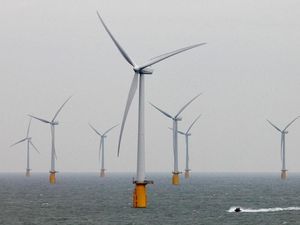Deep-sea wind farm the size of India could power entire globe, study says
Wind speeds are on average 70% higher over the Earth’s oceans than over the land – but it’s not quite that simple.

A massive deep-sea wind farm in the North Atlantic covering an area the size of India could potentially power the entire world, research has shown.
Though such a vast engineering project would face huge challenges, it would provide enough sustainable energy to meet the whole planet’s electricity needs, scientists say.
Computer simulations showed that wind turbines in the North Atlantic would be able to generate at least four times more energy per square metre than their counterparts on land.

That is roughly equivalent to the estimated amount of energy consumed across the globe today.
Writing in the journal Proceedings of the National Academy of Sciences, doctors Anna Possner and Ken Caldeira concluded: “On an annual mean basis, the wind power available in the North Atlantic could be sufficient to power the world.”
The duo – from the Carnegie Institution for Science at Stanford University, California – pointed out wind speeds are on average 70% higher over the Earth’s oceans than over the land.
However, efficiently extracting energy from wind is more than a simple matter of placing turbines in the path of the strongest gales you can find.

Research has shown that due to this effect, electricity generation for large wind farms on land may be limited to about 1.5 watts per square metre.
The new simulations showed that in the North Atlantic the limit would be significantly higher, making it possible to generate more than six watts per square metre.
The reason for this is that North Atlantic winds tap into a huge reservoir of energy created by heat pouring into the atmosphere from the ocean surface.
As a result, more energy is transported down from high in the atmosphere than occurs over land, which helps overcome the impact of turbine drag.

Power generation from a vast North Atlantic wind farm would be seasonal, with output dropping to a fifth of the annual average during the summer, the scientists pointed out.
Even then, enough electricity would be produced to meet the energy demands of all the countries in the European Union.
A giant wind farm in the North Atlantic would have to operate in “remote and harsh conditions” with wave heights frequently exceeding three metres (9.8ft), the researchers said. Such a project would also have to be politically and economically acceptable.
The scientists added: “Nevertheless, even in the relative calm of summer, the upper geophysical limit on sustained wind power in the North Atlantic alone could be sufficient to supply all of Europe’s electricity.”




